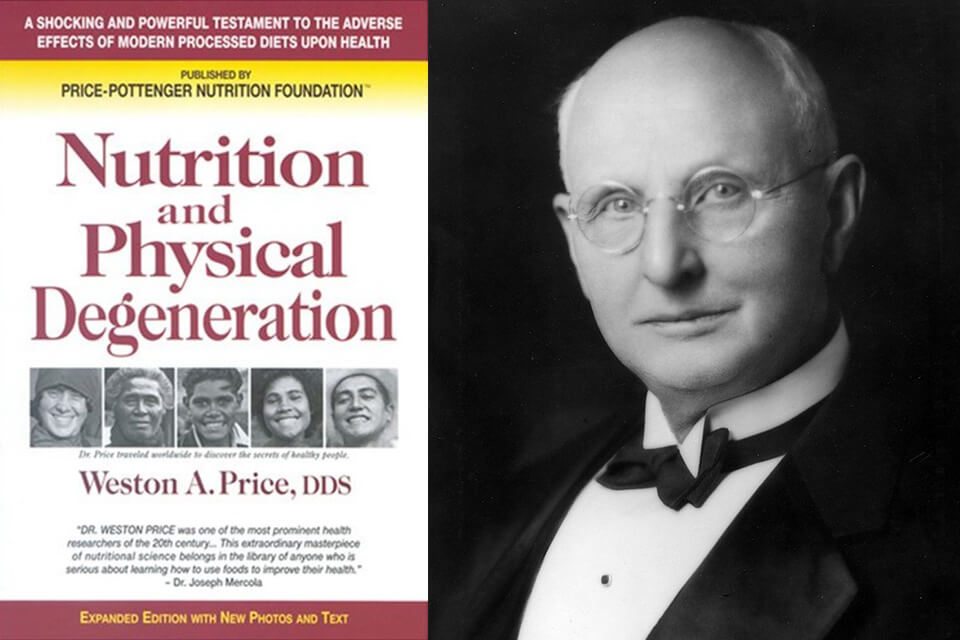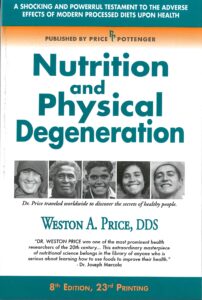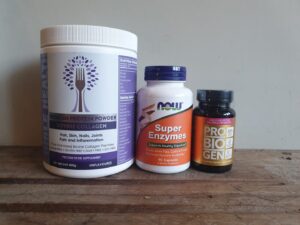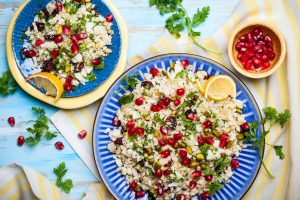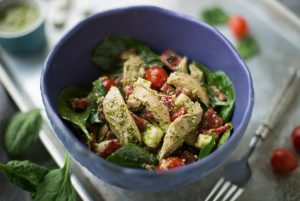The Year of Health – Day 4 – June 4th 2021
I’ll be starting my June nutrition experiment on Monday (7th June). The things I am going to explore further will be:
- Blood Sugar Balance
- Nutrient Optimisation
- Ketoflex 12/3
- Seasonal Foods & Recipes for June
I first became interested in the nutrient density of foods and our diets when I read Weston Price’s epic tome Nutrition & Physical Degeneration.
I love the work of Weston Price and feel it’s seriously under-rated. I still know of very few nutrition writers that discuss vitamin K2, despite Weston Price being aware of it and it’s importance over 80 years ago.
In the 1920s and 1930s, Dr. Weston Price, a dentist, spent 10 years of his life travelling the world to look for people free of the dental problems plaguing nearly all Americans. During his 10 years of travelling he visited 14 countries on 5 continents and studied thousands of people eating their traditional diets.
He found that people eating their native diets of unprocessed wholefoods had excellent mental, physical and dental health. Those eating modern processed foods had seen their health deteriorate. This research will never be able to be repeated since these traditional people are no longer isolated from modern influences, and this is what makes Weston Price’s work so important.
A LEGACY OF DIVERSITY
As great as it would be to find a “human species diet” perfect for everyone on the planet, it’s a futile quest. And here’s why:
If anything defines our two-million-year-long diet history, it’s adaptability. The power to make food out of whatever our environment spits out at us (or rather, whatever we manage to wrestle from its grasp).
We’ve infiltrated every corner of the globe, trekked through the most inhospitable of climes, devised ways for turning any life form into something edible, and – for the most part – lived to tell about it.
But more than just surviving, we’ve also managed to thrive on a wide spectrum of diets. And one of the most fascinating portals into that reality comes from the work of Weston Price, an early-1900s dentist who scoured the globe in search of isolated populations still eating their traditional cuisines, untouched by Western foods and ways.
Though his focus was often tooth-centric – seeking out communities free from the dental decay ravaging Americans, and trying to find out what made the healthiest-mouthed folks immune – his findings reached far beyond the realm of dentistry. In an expedition that’d be all but impossible to repeat today, Price encountered humans at their absolute prime: free from chronic disease, straight-toothed without braces, cavity-free without floss and toothpaste, strong, sturdy, happy, healthy.

And it wasn’t just genetic luck of the draw, either. Price also observed that as soon as those isolated populations switched over to “nutrition of commerce”—refined flours, sugars, vegetable oils, jams, canned goods – their health tanked just like the rest of the Western world. Through generations of trial and error, each community had found a combination of foods to build the healthiest bodies possible.
Intrigued? Here’s a snapshot of what some of the healthiest communities ate as mainstays, summarized from Price’s book.
The Swiss of the Loetschental Valley:
- Fresh, hand-milled rye bread
- Raw cheese, butter, and milk from cows eating fast-growing alpine grass (which supercharged the dairy with vitamins)
- Local vegetables, both fresh and preserved
The Native Americans of the Rocky Mountains:
- The organs and bones of wild game, particularly moose and caribou (muscle meat was typically fed to the dogs rather than used as human food)
- Bark, tree buds, and other vegetation, particularly in the summertime
The Gaelics in the Outer and Inner Hebrides:
- Oats at every meal, mostly in the form of oat porridge and oatcakes
- Local seafood including fish, lobsters, crabs, oysters, and clams; cod liver was particularly revered
- Fresh vegetables in the summer; stored vegetables in the winter
The tribes in Eastern and Central Africa:
- Starchy foods like sweet potatoes, beans, corn, and millet
- Fish, shellfish, and water plants
- Wild game, or domesticated goats and cattle used for meat and dairy
- Insects like ants and locusts—used in pies, puddings, or dried and ground into flour
The Eskimos of Alaska:
- Sea animals—particularly the organ meats, oils, and skin
- Fish and fish eggs
- Caribou and other land mammals
- Vegetation collected in the summer and saved for the winter—including cranberries, kelp, water grasses, bulbs, ground nuts, and flower blossoms preserved in seal oil
So there you have it.
No one counted carbs or fat. No macronutrient ratio was a universal sweet spot. The rye-eating Swiss hardly shied away from gluten; nor did the Aborigines get the memo that they were tragically deficient in Healthy Whole Grains.
The Gaelics’ oats-with-every-meal habit flew in the face of paleo diet wisdom, while the Eskimo’s meaty menu should have doomed them to disease, according to plant-based diet proponents. Cholesterol-rich organ meats and shellfish were prized rather than feared. Successful diets ranged from high-starch to starch-devoid; from meat-based to meat-scarce; from high-grain to no-grain.
In other words, those traditional diets ran the gamut. Yet in every instance, they produced remarkably, enviously healthy groups of humans.
So what can we take away from that? Along with bolstering the idea that many different diets can support health, those traditional cuisines all had a few things in common – pockets of overlap we’d best pay attention to. In each case, those health-promoting traditional diets:
- Were free from processed foods, vegetable oils, refined sugar, refined flour, and tinned foods.
- Contained a mix of both plant and animal foods, with no diet being entirely carnivorous or entirely vegan.
- Were extremely nutrient-dense.
- Contained a rich source of fat-soluble vitamins (particularly vitamins K2, A, and D) – whether from organ meats, high quality dairy, fish eggs, other seafood, or insects.
- Placed muscle meats pretty low on the totem pole—valuing instead an animal’s organs, skin, bones, and cartilage (think liver, kidneys, tinned fish with bones, homemade bone stocks and gelatin).
If you were to adopt the above 5 principles as a strategy for your approach to nutrition moving forward you would be on a very good path to lifelong health.
in 2015 I read The Wahls Protocol by Dr Terry Wahls.
DR TERRY WAHLS’ RESEARCH
Dr. Terry Wahls is a clinical professor of medicine at the University of Iowa. She is also a patient with secondary progressive multiple sclerosis (MS), which confined her to a tilt-recline wheelchair for four years.
Dr. Wahls restored her health using a diet and lifestyle program she designed specifically for her brain. She is the author of The Wahls Protocol: How I Beat Progressive MS Using Paleo Principles and Functional Medicine.

She conducts clinical trials that test the effect of nutrition and lifestyle interventions to treat MS and other progressive health problems.
Terry Wahls’ team published a paper in 2017 (Randomized control trial evaluation of a modified Paleolithic dietary intervention in the treatment of relapsing-remitting multiple sclerosis: a pilot study) which concluded: A paleolithic diet may be useful in the treatment and management of Multiple Sclerosis, by reducing perceived fatigue, increasing mental and physical quality of life, increasing exercise capacity, and improving hand and leg function. By increasing vitamin K serum levels, the Modified Paleo Dietary Intervention (MDPI) may also reduce inflammation.
You can watch her TED Talk here:
After extensive research Dr. Wahls came to the conclusion that to reverse the progression of her MS, she needed to focus on the nutrient-density of her diet. She advocates eating 6-9 cups of vegetables per day, made up specifically of ⅓ green vegetables, ⅓ colourful vegetables and ⅓ sulfur-rich vegetables. Then the rest of the diet is a low-carb, grain-free diet that focuses on organ meats, meat and fish, sea vegetables and healthy fats.
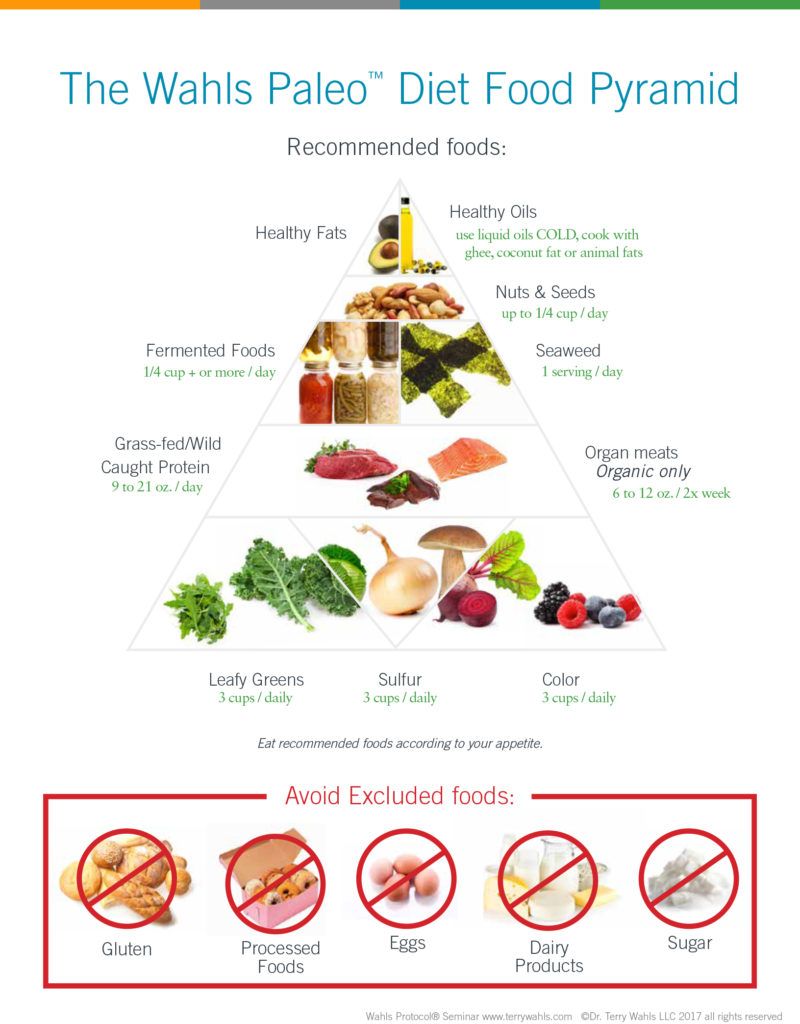
More recently I have been very influenced by the amazing work of Marty Kendall who says:
“Your diet doesn’t need a name or a belief system, just enough nutrients.”
Marty Kendall blogs at Optimising Nutrition and has developed an incredible tool called Nutrient Optimiser which analyses your current diet and teaches you to improve it to maximise the nutrients you consume.

Here is what Marty has figured out:
INSULIN LOAD AND THE FOOD INSULIN INDEX
First, Marty analysed the Food Insulin Index to help his Type-1 Diabetic wife make informed food choices to stabilise her blood sugar and insulin requirements. Once we can get off the blood sugar roller coaster, we should see our weight, mood and energy levels improve dramatically!
NUTRIENT DENSITY
But he soon realised that the foods that required the least insulin in the short term (i.e. high-fat, low-protein foods) didn’t provide a significant amount of nutrients. So he combined the insulin index with nutrient density to identify the foods and meals that were nutritious while also keeping blood sugars stable.
SATIETY
More number crunching enabled Marty to identify how macronutrients and micronutrients affect our appetite, cravings and how much we eat. Whilst we can try to restrict for a while, our appetite usually wins out in the end, that is, unless we choose foods the provide greater satiety.
The QUALITY of the food we choose to eat has a massive impact on food QUANTITY.
A couple of years ago I participated in one of Marty’s Nutrient Optimisation Challenges, and I learnt SO much about how to optimise my diet for maximum nutrient-density. I will be using what I learnt and applying it to my meals over the next few weeks.
I’ll also be using recipes from Optimising Nutrition’s Maximum Nutrient Density Recipe Book (as well as lots of my own recipes which you can find here).

Tomorrow I’ll write about Ketoflex 12/3, (a similar approach to Nutrient Optimiser but less personalised) developed by Dr. Dale Bredesen, plus what I learnt from my first PreCODE report.
#JoyfulJune

I’m working my way through Action for Happiness’ June calendar. Today’s task is: Take a Photo of Something that Brings You Joy and Share it. So here’s a picture of my youngest son, Wilf who is 5 years old. It brings me joy to see him happy and enjoying himself ❤️

I’m also “Taking in the Good” every day – you can read more about this in my post from Day 1.
Taking in the Good (write down three good things that have happened or that you have noticed)
- I went foraging in the rain this morning with my three children. We picked stinging nettles and nipplewort (Lapsana communis).
- I enjoyed some 85% Green & Blacks dark chocolate with a cup of tea.
- I felt inspired when reminding myself of the incredible pioneering work of Weston Price.
What will you remember about today, the only Friday 4th June 2021 we will ever have?
